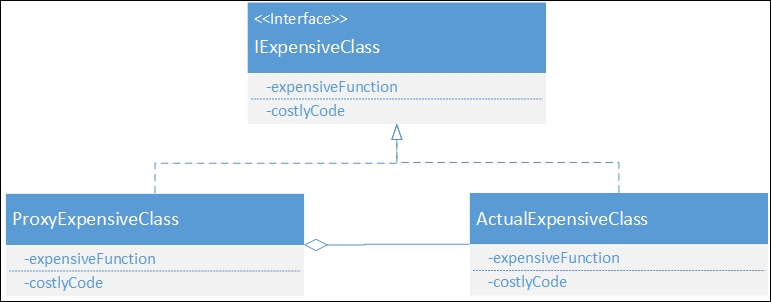Proxy
The final pattern presented in this chapter is the proxy. In the previous section I mentioned how it is expensive to create objects and how we would like to avoid creating too many of them. The proxy pattern provides a method of controlling the creation and use of expensive objects. The UML of the proxy pattern looks like the following diagram:

As you can see, the proxy mirrors the interface of the actual instance. It is substituted in for the instance in all the clients and, typically, wraps a private instance of the class. There are a number of places where the proxy pattern can be of use:
- Lazy instantiation of an expensive object
- Protection ...
Get JavaScript: Moving to ES2015 now with the O’Reilly learning platform.
O’Reilly members experience books, live events, courses curated by job role, and more from O’Reilly and nearly 200 top publishers.

